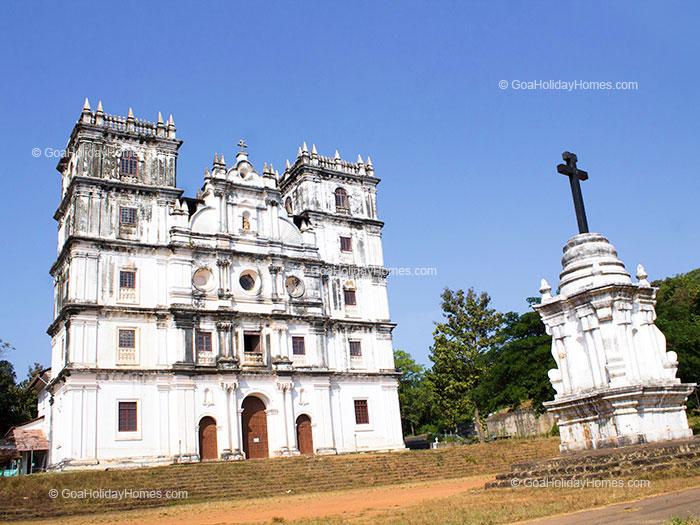Inquisition Horrors in Goa
Once the Christian missionaries arrived, the religious practices of the Portuguese turned oppressive after an initial period of indifference and all Hindu temples were ordered closed in 1541. Over 350 temples were destroyed by the year 1559 and even the private idol worship was banned. When Francis Xavier, the famous missionary demanded the setting up of Goa Inquisition, a religious tribunal for suppression of heresy and punishment of heretics, things got worse.
The Inquisition set up in 1560 was notorious for using brutal torture and lasted till 1812 and this was the golden age where the power of life and death of ordinary people was held by a Christian priest. If people were unable to pass 'act of faith' (autos - da - Fe), they were stretched on the rack and also some people were burnt on the stake.
The Goan Inquisition was documented in bestseller Guardian of Dawn by Richard Zimler who called it a 'machinery of death' - the most merciless and cruel ever developed. Dismembering the children limb by limb in front of their parents whose eyes were taped open till they agreed to convert was particularly an effective method.
On the faintest suspicion of heresy, thousand died during the 252 years of the Inquisition. If a small idol was kept at home or a non-Christian prayer whispered, anyone could be arrested and tortured in special Inquisition prisons. It is estimated that by the end of 17th century the ethnic cleansing of Hindus and Muslims was complete as there was less than 20,000 that were non - Christian out of the total Goan population of 2, 50,000.
At Old Goa the palace of Adil Shah was turned into Inquisition House. A wooden table overseen by a crucifix was where the dreaded interrogators sat to interrogate the accused. To house their deities the Hindus in response smuggled them across the Goan border at that time - the Cumbarjua canal to Ponda, where they built new temples them. For this reason Ponda is known as the Temple Town.
In the first 200 years of the Portuguese rule, Goa came to be called as 'Goa Durado' (Golden Goa) as the trade and economy was booming. The huge churches and cathedrals that can be seen at Old Goa today is the result of the construction spree during the Second Golden Age of Goa. Elegant mansions in the countryside were built by the Portuguese nobility most of which still stand. In 1556 at Old Goa the first printing press in Asia was established.
However as the city lacked a sewage system and was situated amongst swampland and unhealthy marshes, it was ravaged by epidemics of typhoid, cholera and malaria and the political threats were along with this. In 1570, the Muslim armies of Deccan sultans besieged Goa.
Goa's monopoly of sea trade dealt a death blow as Portuguese colonies elsewhere in Asia were captured by the Dutch, the Portuguese fleet off the Gujarat coast was defeated by the British East India Company and Hormuz in the Persian Gulf was taken by the Persians from the Portuguese.
The Portuguese were simultaneously grappling the formidable Marathas with an ascendant Hindu regional power. In 1664, Shivaji the great Maratha leader took Bicholim and Pernem. Bardez and Salcete were captured by his son Sambhaji in 1683. When the Marathas arrived close to Old Goa, the Portuguese collapse seemed imminent. Hurrying to the Basilica of Bom Jesus, the dejected Viceroy prayed to the saint and left the fate of the city in his hands. Miraculously, the Marathas retreated after the Muslim army arrived on the Goan border. The Marathas and the Portuguese inked a treaty in 1739. Peace reigned during the next 50 years and without violence the areas of the new conquests were taken by the Portuguese into Goan territory as a buffer around Old Goa.
To prevent Goa from falling into the French hands during the Napoleonic wars in 1799, a small British Garrison occupied the Cabo Fort and Fort Aguada. Initially the Portuguese protested but considering the growing muscle of the East India Company the English hung on to the forts for a decade, they later concurred. About 6 km from Panaji near the Cabo Raj Bhawan near Dona Paula, a small British cemetery still exists from those days.
Harassed by frequent epidemics, the inhabitants of Old Goa began to move toward Panaji by early 19th century. Adilshah's summer place on the banks of the Mandovi was already taken by the Viceroy as his personal residence in 1759. Panaji came to known as 'Nova Goa' (New Goa) in 1834 and by 1843 Panaji was declared the Capital after Old Goa was officially abandoned.

